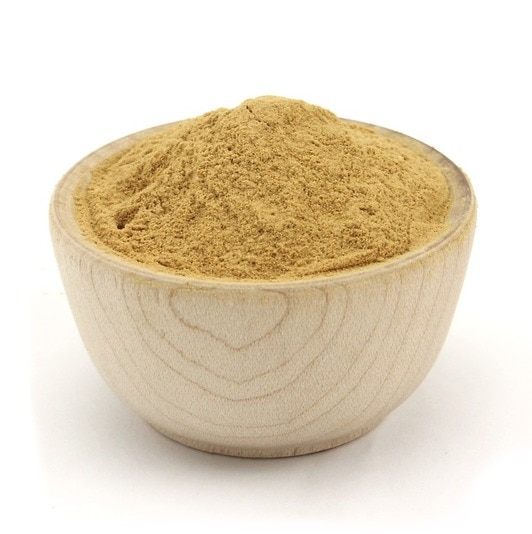Why You Should Ditch Sugar for Monk Fruit Sweetener
A sweet tooth is a common problem in the United States with each American consuming an estimated 130 pounds of sugar per year (Walton, 2012). This has gradually risen over the past few decades with the addition of sugars to many processed foods. Unfortunately, all of that added sugar is taking a toll on our collective health. Eating too much sugar is associated with obesity, elevated triglycerides, higher diabetes risk, oral health problems, and higher risk of cardiovascular disease. Finding alternatives to added sugar can help you stay healthy and fit. Now, monk fruit sweetener is taking the world by storm as one of the most buzzed about sugar substitutes on the market.

What Is Monk Fruit Sweetener?
As its name suggests, monk fruit sweetener comes from the monk fruit tree. This tree, also known as Siraitia grosvenorii or luo han guo, is native to northern Thailand and southern China. Here, the tree grows on the steep slopes of forested mountains. It is thought that monk fruit was first cultivated by Buddhist monks more than 800 years ago, which is where it got its name (MonkFruit, 2016).
The fruit of the tree has long been recognized for its intensely sweet properties. It is 20 times sweeter than other fruit juices and nearly 300 times sweeter than table sugar (MonkFruit, 2016). Monk fruit is used in traditional Chinese medicine as a treatment for a sore throat or a cold. It has also been used as a low-calorie sweetener for decades in Asia, although it is just beginning to gain global popularity for this purpose.
The monk fruit looks like a small melon and is full of compounds known as mogrosides. These mogrosides are naturally occurring antioxidants, meaning that they fight against oxidative damage in the cell. Mogrosides also have a sweet property, making monk fruit powder a popular sweetener.
How Monk Fruit Sweetener Can Help You Ditch Your Sugar Habit
One of the problems with added sugar is that it causes your blood sugar levels to spike. Over time, this can cause your cells to become resistant to insulin, the hormone that controls your blood sugar. A sweetener like luo han guo does not have the same effect on your blood sugar levels. Because monk fruit is not full of glucose, the primary sugar our body uses, it has less of an effect on blood sugar than traditional sweeteners (Dharmananda, n.d.). This means that monk fruit sweetener is appropriate for diabetics.
Monk fruit sweetener also has a high antioxidant content and may have anti-inflammatory benefits, although more scientific research is needed to determine the health benefits of monk fruit powder.
Ways to Incorporate Monk Fruit Sweetener into Your Diet
When purchasing monk fruit powder, look for powder that is at least 80% pure extract, which means that it contains a high proportion of the mogrosides that give it sweetness and antioxidant-boosting power. Monk fruit powder is extremely potent, with a small spoonful providing an equivalent amount of sweetness as a cup of sugar.
There are many ways to use monk fruit powder to replace table sugar in your diet. Just a tiny bit goes a long way. Consider the following uses for luo han guo (Dharmananda, n.d.):
- Coffee or tea sweetener. Rather than stirring a spoonful of honey or sugar into your tea, add a small sprinkle of monk fruit sweetener.
- Breakfast sweetener. Craving an extra boost of sweetness on your morning oatmeal or yogurt? Stirring monk fruit sweetener into your morning meals feels indulgent but doesn’t pack on the excess sugar.
- Baking sugar substitute. Baking with monk fruit powder requires a bit of trial and error, as the volume of monk fruit sweetener needed is so much smaller than table sugar. Begin by cutting the sugar quantity in half and adding an equivalent amount of monk fruit sweetener (by sweetness, not by volume -- remember that 1 tsp monk fruit sweetener equals 1 cup of sugar).
- Make a homemade soda substitute. If you’re craving soda but can’t stomach the amount of added sugar, stir a small spoonful of monk fruit powder into a glass of carbonated water. You’ll get the same sweet boost without the excess sugar.
- Blended into a smoothie. Your favorite smoothie will taste that much better with a sprinkling of monk fruit sweetener. Blend the sweetener with your favorite fruits, yogurt, and ice for a refreshing -- and healthy -- drink.
Healthy Eating
- Healthy Snacks
- Healthy Meals
- Healthy Recipes
- Sports Nutrition
- Nutrition and Special Diets
- 21 Day Fix
- 5 Popular Diet Similarities
- Alkaline Diet
- Anti-Inflammatory Diet
- Calorie Counting
- Carb Cycling Diet
- Celiac Disease
- Cholesterol
- Clean Eating
- Crohn's Disease
- DASH Diet
- Detox Diet
- Diabetes
- Diabetes Diet
- Diet Pill Dangers
- Fat Burning Foods
- Gluten-free Diet
- Glycemic Index
- Heart Health
- High Blood Pressure Diet
- High Fiber Foods
- How to Eat Healthy
- How to Lower Blood Pressure
- Hypertension
- IBS Diet
- Ketogenic Diet
- Liquid Diet
- Low GI Foods
- Low-Carb Diet and Foods
- Low-Fat High-Carb Diet
- Mediterranean Diet
- Mediterranean Diet Foods
- Military Diet
- Nutrition Labels Explained
- Paleo Diet
- Raw Food Diet
- Superfoods
- Sustainable Weight Loss
- Thrive Diet
- Vegan Diet
- Vegetarian Diet
- Weight Loss Shakes
- Whole30
- Vitamins, Minerals & Nutrients
